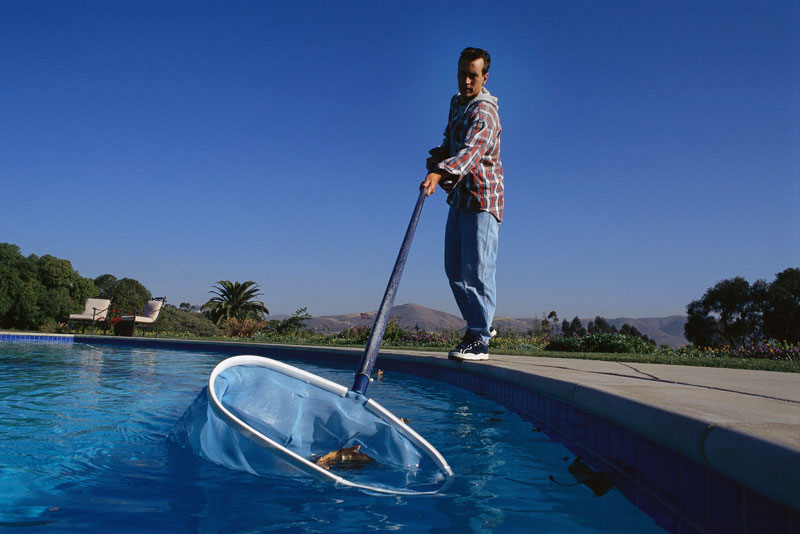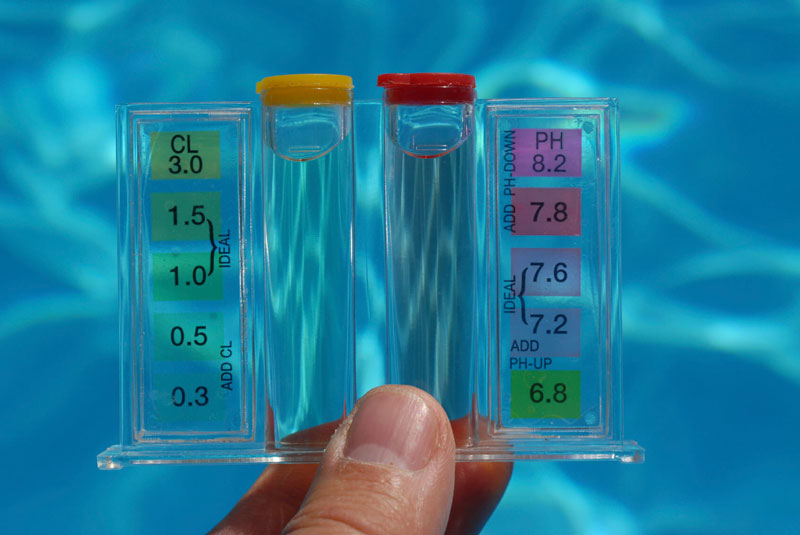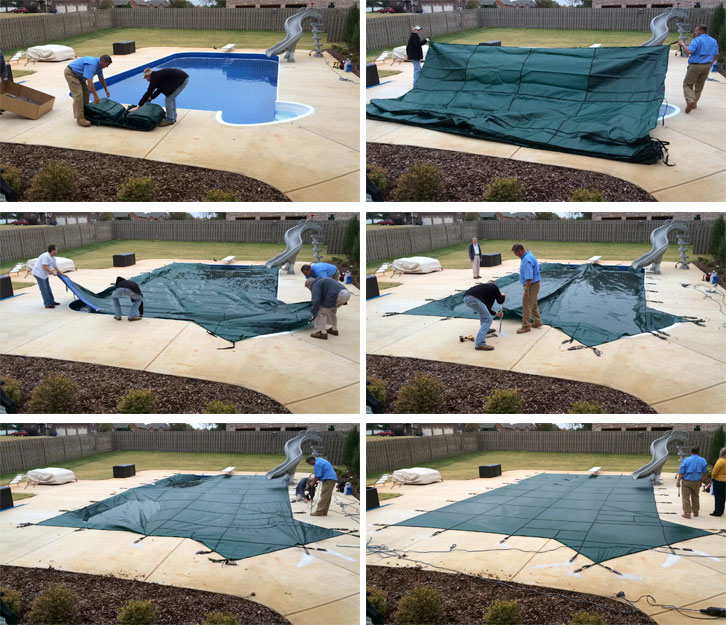The Tara Pool & Outdoor Products Blog
Preparing Your Pool for Winter
Once pool season is over, it’s time to start preparing your vinyl liner swimming pool for winter. Properly winterizing your pool will protect if from damage and extend the life of your pool liner and pool equipment. Closing a swimming pool is a little more challenging than opening one. You would not be out of line getting a pool professional to do it for you. But if you’ve got a little time and some patience you can certainly tackle it on your own.
Cleaning
 The first step is to give the swimming pool a good thorough cleaning. Clear out all leaves and debris from the pool and clean the pools skimmer and pump basket. Do not use abrasive cleaning aids, i.e; steel wool, sharp bristled brushes, scouring pads, etc. We recommend using alkaline base pool cleaning agents for cleaning the area above the water line. Acid base chemicals can leave a residue which will cause your vinyl pool liner to fade out.
The first step is to give the swimming pool a good thorough cleaning. Clear out all leaves and debris from the pool and clean the pools skimmer and pump basket. Do not use abrasive cleaning aids, i.e; steel wool, sharp bristled brushes, scouring pads, etc. We recommend using alkaline base pool cleaning agents for cleaning the area above the water line. Acid base chemicals can leave a residue which will cause your vinyl pool liner to fade out.
Balancing
 Next you want to adjust the pool pH, pool alkalinity, calcium hardness and chlorine levels to the ideal levels. It’s a good idea to take a sample to your pool dealer and have them test it, to be certain.
Next you want to adjust the pool pH, pool alkalinity, calcium hardness and chlorine levels to the ideal levels. It’s a good idea to take a sample to your pool dealer and have them test it, to be certain.
Winterizing Chemicals
Use the absolute minimum amount of pool chemicals that will allow the desired effect. Do not shock your swimming pool using Trichlor (hypochlorite is safer) and circulate the pool water for 72 hours before shutting down.
Remember: The act of closing your in-ground vinyl swimming pool is creating a closed environment. The more pool chemicals you use the more severe that environment will be. Do not chlorinate thinking you are doing good. Less is best when adding chemicals to your vinyl liner pool.
Never add chemicals directly to the swimming pool. Dilute them first in a bucket of water and add them to the pool by pouring them into the skimmer while the circulation system is on.
Circulate the pool water for a full 72 hours after the final addition of chemicals is added. Even liquid chlorine can concentrate in the deep end and cause bleaching of the vinyl pool liner.
The chlorine level should not exceed 2.0ppm.
Water Level
Never drain your pool. For most pools we recommend that you not lower the water below the skimmer. However, in northern markets it’s necessary to lower the water below the skimmer mouth. Place a gizmo or a weighted plastic milk carton in the skimmer to protect it from freeze damage. Once a pool has been filled with water, the liner begins to lose its stretching properties; therefore the pool should be kept full of water at all times. The water acts as a protector for the liner and holds the liner in its proper position, thus eliminating any re-stretching and drying out of the vinyl. Follow the manufacturer’s recommendations concerning the winterizing of the pump and filter.
Cover the Pool
 Use a good fitting pool cover that is sealed around the entire perimeter to keep your pool secure. An uncovered pool accumulates debris, such as leaves and worms. The debris absorbs the chlorine in the pool, leaving a potential risk for staining or bleaching of the liner. Keeping your pool covered over the winter also keeps the liner out of the sun, which prolongs the lifespan. The best option for covering your pool is a safety cover. It provides an attractive, low maintenance barrier against the elements. Unlike water bag covers, you can walk on a safety cover if necessary. A safety cover will prevent accidents and keep your pool secure all winter.
Use a good fitting pool cover that is sealed around the entire perimeter to keep your pool secure. An uncovered pool accumulates debris, such as leaves and worms. The debris absorbs the chlorine in the pool, leaving a potential risk for staining or bleaching of the liner. Keeping your pool covered over the winter also keeps the liner out of the sun, which prolongs the lifespan. The best option for covering your pool is a safety cover. It provides an attractive, low maintenance barrier against the elements. Unlike water bag covers, you can walk on a safety cover if necessary. A safety cover will prevent accidents and keep your pool secure all winter.
When you subscribe to the blog, we will send you an e-mail when there are new updates on the site so you wouldn't miss them.
